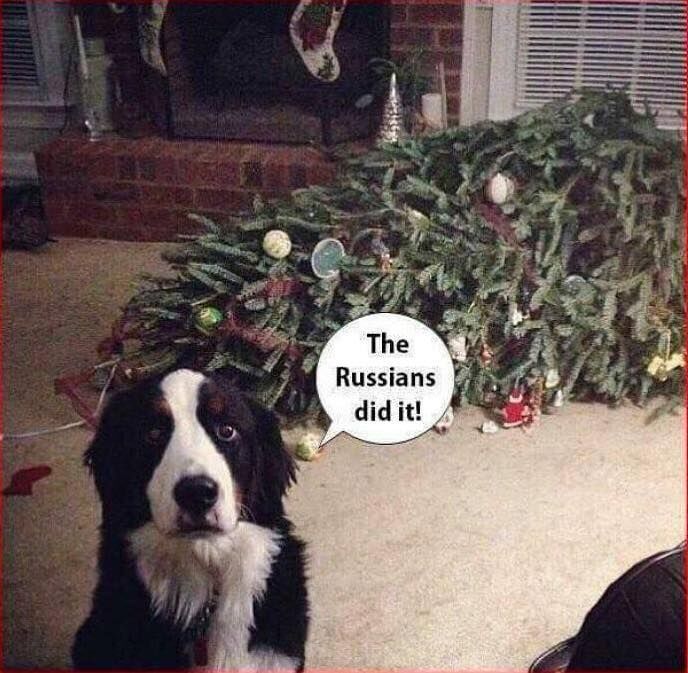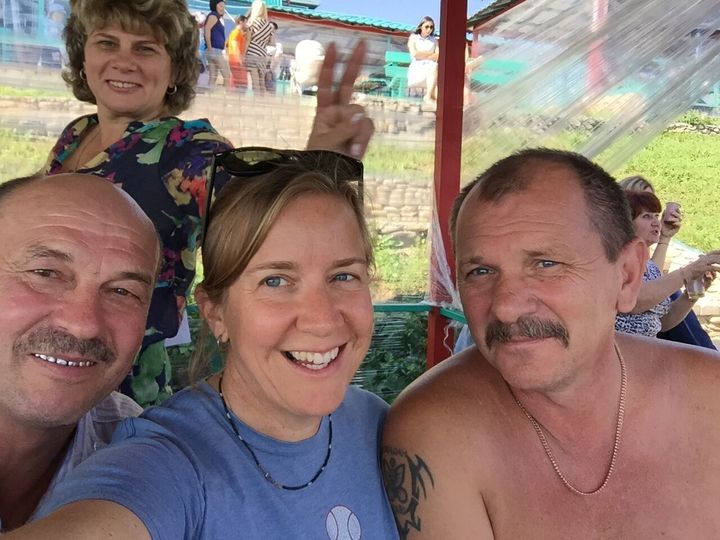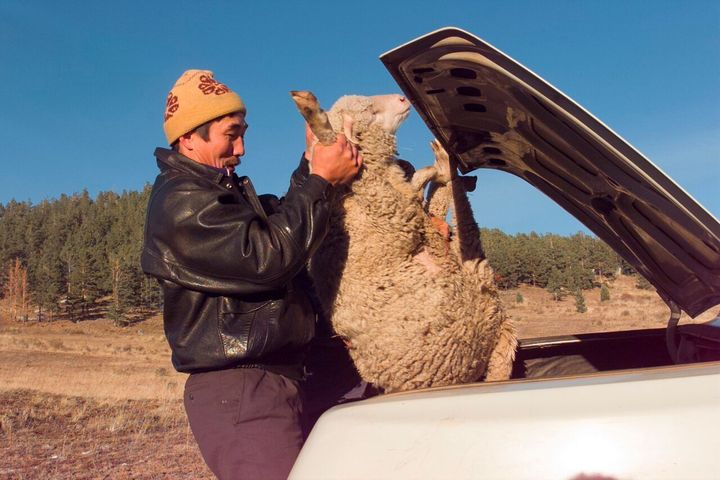In 1995, Los Angeles writer Lisa Dickey ventured to Russia in her late 20s to chronicle the personal stories of ordinary people she would come to meet. The trip became a three-month journey across the Russian landscape; from east to west, she interviewed new friends in 11 different cities. Ten years later, Dickey returned to Russia to repeat the exact same journey. She wanted to learn how the lives of the people she had met and interviewed ten years prior had changed over a decade. In 2015, she returned once again. The results of her findings are chronicled in Bears in the Streets: Three Journeys Across a Changing Russia (St. Martin’s Press), a deeply intimate portrait of modern Russia that spans twenty years and whose mixture of humor, history, and emotions from a faraway land stay with you long after the book’s end.
I recently had the opportunity to ask Lisa Dickey a few questions about her experiences visiting Russia, her perspective on what Russian people would say about Russia’s involvement in US politics, and—of course—the food.
EM: Beginning in Vladivostok—a Pacific port city that borders China and North Korea—and ending in St. Petersburg, you covered an impressive amount of ground as you made your way across the Russian landscape. With an intimate knowledge of the land and the people you visited every ten years from 1995 to 2015, which area did you find to change the most drastically in the thirty-year span? Which did you find stayed the same?
LD: The most dramatic change was in a completely unexpected place: Kazan. In 2005, arriving after having been away for 10 years, I was in a taxi going past the Kazan Kremlin, a beautiful, centuries-old fortress right in the center of town. It’s a classic Russian kremlin, with whitewashed walls, towers and a smattering of Orthodox churches and government buildings inside—but as we drove by, this brilliant turquoise dome and minarets suddenly popped into view. I was shocked! There was a giant new mosque inside the kremlin walls. Kazan is the capital of Muslim Tatarstan, and the mosque was actually a recreation of one that had been torn down in 1552 by Ivan the Terrible. But still, it was so unexpected—and something you’ll never see anywhere else.

The rebuilt Kul Sharif mosque inside the Kazan Kremlin, 2015
The least changed place had to be Galtai, the tiny village in Buryatia where I visited a farmer and his family. It’s not much more than two dirt roads and a few dozen wooden houses, and when I came back in 2015, the village felt exactly the same as it had in 1995. Which probably was exactly the same as it felt in 1975 and 1955 and 1935. It’s truly a timeless place.

The village of Galtai, 1995
EM: In your travels, you met people of all ages, from grandmothers who remember Soviet days to young teens daydreaming about their futures. What was the starkest contrast you noticed among different generations?
This generation seems different from older generations in two ways. First, they don’t drink or smoke as much as their parents and grandparents did. They also seem more focused on exercise – there are a lot more gyms and health clubs now. And they’re very aware of the health properties of food. Honestly, I lost track of how many times I heard younger Russians telling me, “I only cook organic,” or “It’s GMO-free!”
Second, young people seem more ambitious, business-wise. I talked with one 25-year-old who had his own events company; he said that for a while, he’d employed his father, but he had to fire him because his work ethic wasn’t up to par. Everywhere you look, there are ads for English and Chinese lessons, as well as business incubators and schools: young people are taking seriously the chance to build their careers.
One older scientist I spoke with in Irkutsk found the changes annoying; he couldn’t understand why younger people were so rulesy and prim. “These kids, they won’t even cross the street against the light!” he barked, as we sat in a bar sipping beers at noon on a workday.

A young entrepreneur in Chita, 2015
EM: The question on whether or not the Russian government swayed the 2016 election continues to be investigated and debated. What do you think people in Russia would say about this?
Suffice it to say that for a while there was a popular new meme on Russian social media called “Russia did it.” You’d see a photo of a naughty kid who’d drawn all over the walls, with an innocent look on his face and the caption #RussiaDidIt. Or a plate of ham that had been knocked to the floor, and a dog looking sweetly at the camera: #RussiaDidIt. So, there’s a certain amount of mockery there at the idea that Russia’s responsible for the outcome of our election.

The “Russia Did It” meme
EM: How did you feel traveling alone and what advice would you give other solo travelers?
For the most part, I felt quite safe. I was only really worried one time, when I was alone in a trans-Siberian train compartment with a red-faced young man who proceeded to take his pants off. But as it turned out, he wasn’t menacing at all, just tipsy and a little bit obtuse.
Anyone traveling alone would do well to follow the usual rules: Keep your valuables close, don’t wear a lot of jewelry, be aware of your surroundings. Trust your instincts; if something seems a little bit off, there’s a good chance it is. Better to look silly running in the other direction than to stand around and have something bad happen.

For safety, hang out with friends
EM: Favorite meal?
Well, I’m not sure this was my favorite, but it was certainly the most memorable: the farmer in Galtai slaughtered a sheep in our honor. First, he went running into a flock and caught one bare-handed. He then put it in the trunk of his sedan and drove it back to the house. I’ll spare you the gruesome details, but just before he took its life, he declared, “This is how Genghis Khan taught us to kill sheep!” He, his wife and a few other relatives then prepared every part of that animal: heart, liver, fatty tissue, stomach, intestines. Everything was boiled and served on platters, and we washed it all down with copious amounts of vodka. Not for the squeamish or the vegetarians among us, but it was a truly epic feast.

Buyanto the farmer captures a sheep in Galtai, 1995
Learn more about Lisa at www.lisadickey.com and find Bears in the Streets: Three Journeys Across a Changing Russia online or wherever fine books are sold.

